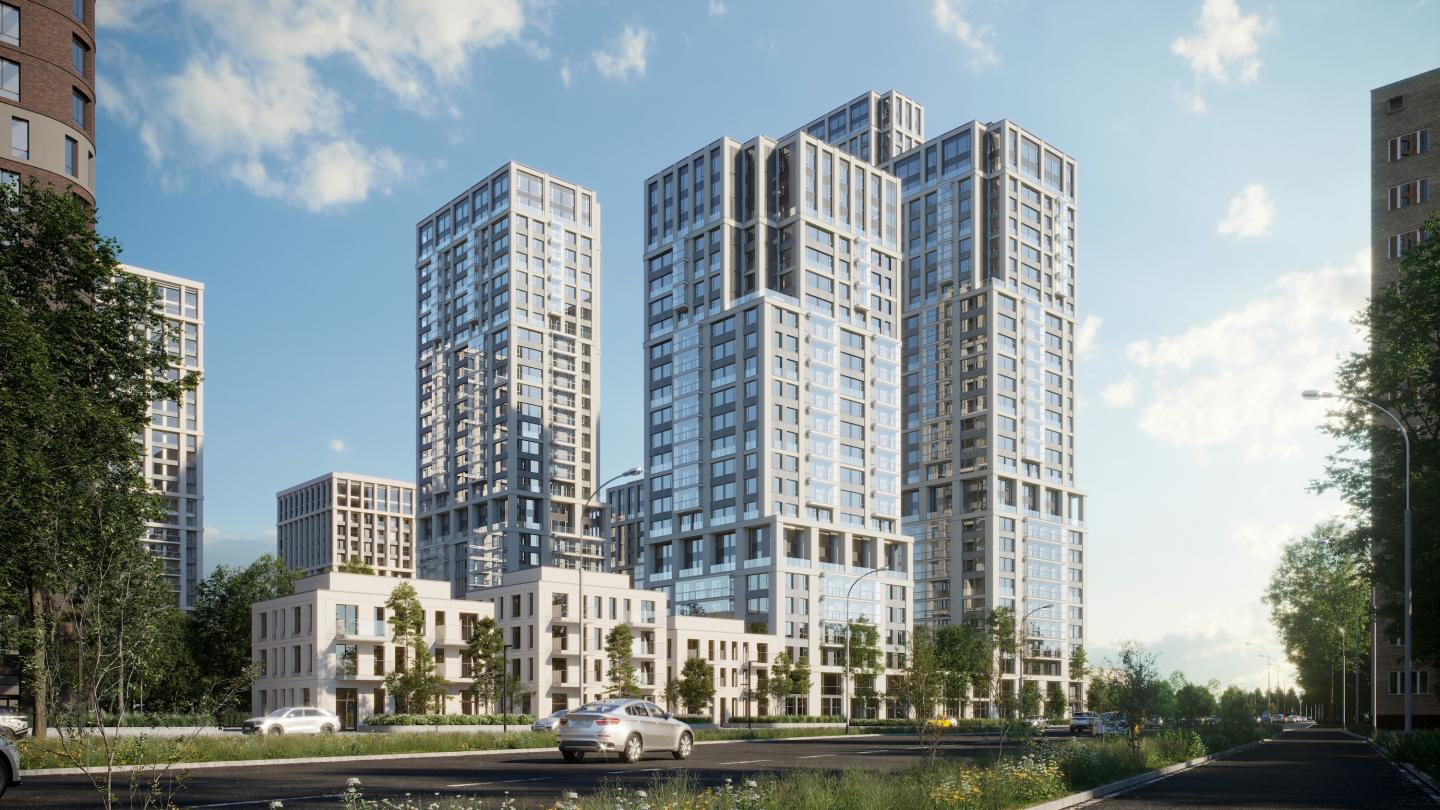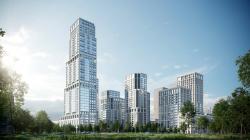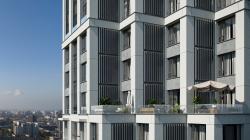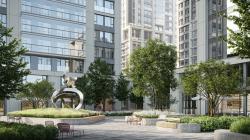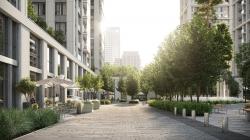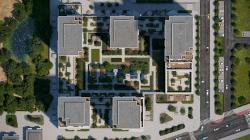Izdanie, a new Moscow quarter from Brusnika, exemplifies the redevelopment of an industrial estate with a marked warehouse and production environment and no pedestrian traffic.
The quarter area dates to the 12th century, with an Old-Believers’ settlement, later morphing into a village. It was on the fringes of Moscow, neighbouring an ancient road linking Veliky Novgorod and the Ryazan Duchy. Later in the 18th century, it housed the Kuskovo Estate, a rare example of the extant heritage architecture and garden complex, and the only national specialised ceramics museum. The estate gained popularity as the summer country house owned by Pyotr Sheremetyev, one of the wealthiest court noblemen in Russia. Since the early 20th century, the area formerly known as Perovo has witnessed the dynamic construction of industrial estates and warehouses. In the 1950s, the district entered the Moscow boundaries, expanding its industrial speciality. Today, the area has an established transportation infrastructure and housing and has room for growth; however, its industrial character persists.
Brusnika Studios designed the masterplan and architecture of Izdanie residential area. Working with the industrial setting, the architects created a natural oasis framed by expressive and harmonious architecture, aiming to alter the existing deep-rooted image and add cohesion to the city fabric. To do so, they formed a dense green belt with boulevards shaping a pedestrian network and several local attractions — central squares offering recreational and entertainment functions and complete with retail outlets. A natural park, landscaped to match the development, frames the entire area.
The inspiration for the quarter design came from Swiss architecture with its accentuated brutalism and solid forms. The Izdanie frontages promote a regular grid and an austere composition. The quarter comprises five towers with varying storey numbers, ranging from 50 to 150 metres, joined with a podium and the ground floor level. The ground floor area houses residential parking, retail outlets and office premises, fringing the podium space. The courtyards are spaced between the tower blocks and unfold onto the parking and podium exploitable roofs.
The vibrant outlines of the development along the main streets relate to the neighbouring high-rises, with a less accentuated look inside the quarter, reflecting the natural recreational setting. The 150-storey landmark dominating the quarter overlooks the crossroads, marking the project in the city’s skyline. With the overall project consistency in mind, the architects aimed at a distinct character for each building. This way, the facade grid is made of horizontal dividing blocks differing in height, sharing the colour and design principles. The cladding features light-toned panels made of glass fibre-reinforced concrete and textured composite materials. Inside the blocks, the diversity in patterns, proportions, and plasticity presented by summer premises create a unique look while maintaining consistency in composition and massing. Discreet horizontal insets of stained glass mark the location of unique layout apartments. Facade balconies feature frameless glazing intended for different uses. For instance, the balcony opens up by pulling the windows apart. It creates continuous change, promoting dynamic frontages. Architectural lighting softens brutal architecture with delicate, natural illumination placed on the sides and horizontal contours of the blocks to accentuate geometry. Supplemental fixtures highlighting unique layout apartments showcase functional features.
Brusnika and Greenhance practice created a joint project for the landscape. The internal greening adheres to the patchwork principle, where all zones and elements of the courtyard are simple geometric shapes with compact joins, merging into a uniform orthogonal composition. The structure presents an asymmetrical, multi-scaled space for the courtyard, complete with various functions, and enjoyable to be in. The yard is designed as an enclosed garden, featuring trees with co-dominant trunks and dense crowns, hedges, 12 and 15-metre accent trees, shrubs and grasses, and a sizeable water feature in the centre. The area comprises a playground zone and a recreational space for adults. The inner yard landscape extends to the frontage with a street fountain and a natural park framing the quarter.
The natural park is a city public space devised as a magnet for the entire district. The towers street frontage features retail outlets sited on the ground floor, giving on to the park to activate and channel the traffic flow. The park concept embraces Japanese minimalism with curvilinear shapes, bending lines in relief, and undulating geo and phyto plastics. Greening over 80% of the park offers an all-season interest. Divided into distinct zones, the area comprises a pond with pergolas, a large play hub for kids, a sports ground with workout and ball games subareas, jogging and cycling lanes, cosy spaces to provide relaxing retreats and dedicated places for dogs. The park has open access to all district residents.
The Izdanie residential area is due for completion by 2028. An additional block will complete the existing architectural complex.
2023
Plot area: 2,4 ha
SFA: 116550 m², split into residential premises: 92780 m² and commercial premises: 14700 m²
Greening area: 11265 m²
Summer premises (balconies, recessed balconies and terraces): 9280 m²
Masterplan, architecture and interior design: Brusnika.Design
Landscaping: Greenhance, Brusnika.Design
Developer: Brusnika
Visual rendering: Vitaly Dulger
